1 The Caribbean and Colombian cumbia
The Caribbean sea or el mar Caribe is part of the Atlantic Ocean as it enters the gulf of Mexico that also touches Texas, Louisiana, and Florida. The lands receiving waters from the Caribbean are called the Caribbean region or la región Caribe (pronounced /la rrehyon kareebeh/). La región Caribe incluye las islas de Cuba, Puerto Rico, Jaimaica and Española (Haití and República Dominicana). All the Eastern coast of Mexico and Central America are part of the Caribe, as well as the Northern coasts of Colombia and Venezuela. There are also lots of small islands between Puerto Rico and Venezuela, some of them comprise Anglo and others French speaking countries.
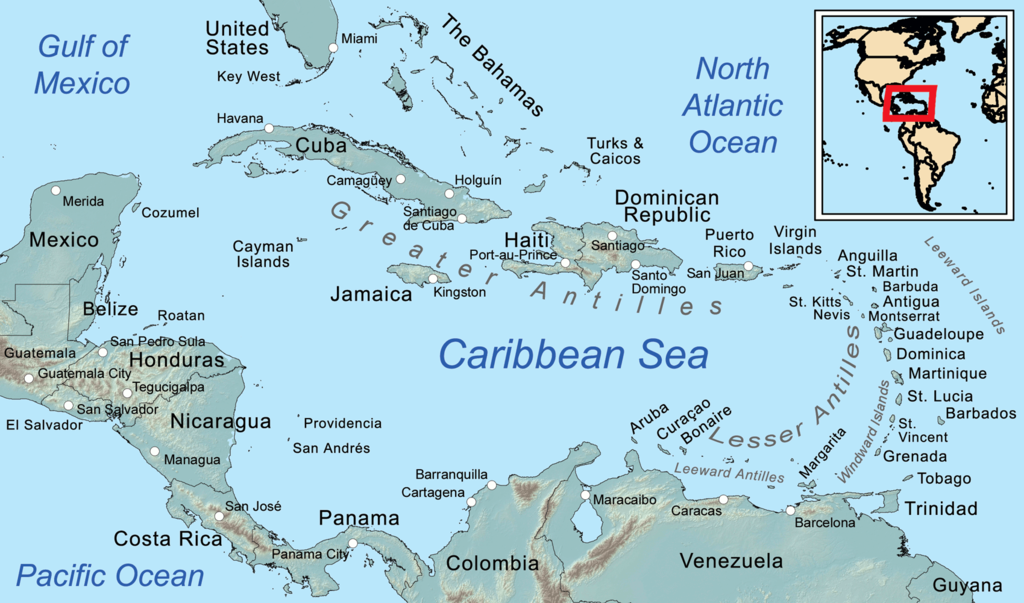
Las islas del Caribe, starting by La Española, were the first lands invaded by the Spanish during the earliest colonization periods. El Caribe was also mainly colonized by people of Southern Spain, who brought aspects of their heritage such as Flamenco-like music, and a very relaxed way to speak. Because of being the first colonized territory in the Americas by Spain, Caribbean culture is probably the most prestigious of Latin America and the most visible in global media.
In the islands, the Spanish invaders made war against the local indigenous peoples and exterminated all of them. Upon the need of people who worked for them, they brought the enslaved people from Africa. The people in Africa came mainly from the Central West area of Africa, around Nigeria, Congo, Gana, and Sierra Leona. Caribbean ports where the axis of slavery trade, where ships from enslaved Africans arrived. They were transported from there to other cities. The African heritage is at the core of the Caribbean culture in all aspects of life.
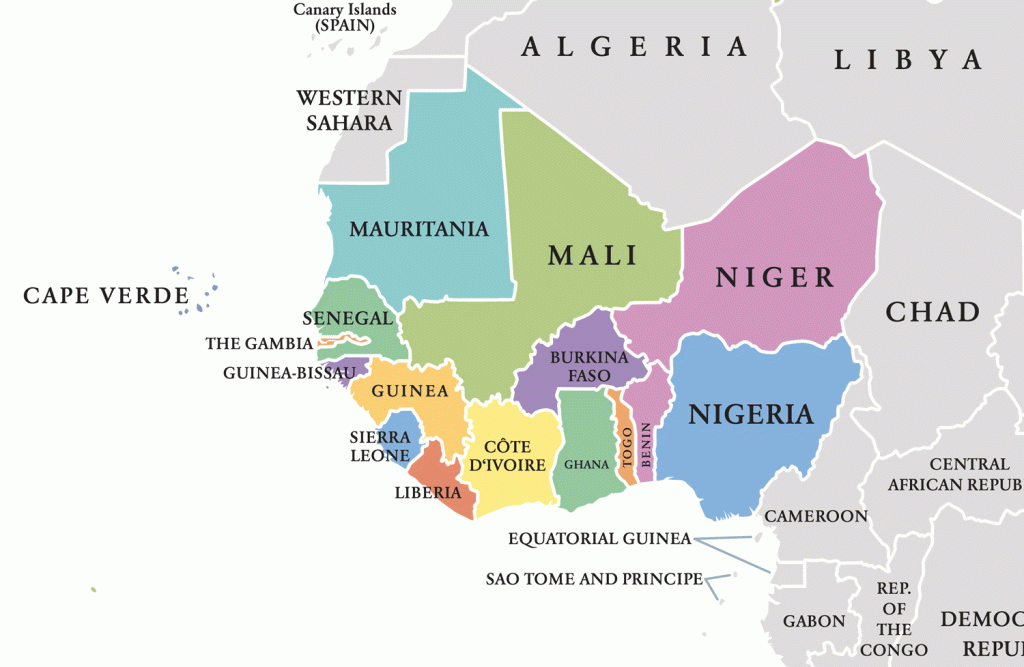
The Colombian Caribbean is different from the islands because the indigenous survived the colonization. That created a mixed culture involving the indigenous, Africans, and Spanish that led to a great variety of folklore. In Colombia, cultural Caribbean touches the coastal line and way beyond internal cities.
There are two ways to say “Caribbean”. The name of the sea is “caribe” /karEEbeh/, and all things referring to that are caribeño (masculine) OR caribeña (feminine). Caribbean culture is cultura caribeña. Remember to pronounce the ñ like an n with the tongue a lot more tense as if you were congested, or try adding a small “i” inbetween: /kareebEnya/.
Cultura caribeña comprises a set of behaviors, values, traditions and ways of speaking Spanish shared among the territories receiving water from el Caribe. The big islands of Cuba, Puerto Rico, Española and Jamaica /hamaeeka/ comprise the Antillas Mayores (Major Antillean islands). Antillas Menores (Minor Antillean islands) are the vast amount of small islands located in el mar caribe.
In Colombia, la cultura caribeña starts fading up towards the mountains, while Venezuela has most of the country influenced by the cultura caribeña. Among Central America, Panamá is the most Caribbean country, while in the others it tends to fade away faster towards the interior. The Pacific sides of all countries have such coastal culture influenced by cultura caribeña.
La cultura hispano-caribeña includes territories where Spanish is spoken: Puerto Rico, Cuba, República Dominicana, Colombia, Venezuela, Panamá among all others. La cultura anglo-caribeña includes territories where English is spoken such as Jamaica. In some countries such as Haití (pronounce it AEETÉE) French is spoken, and in other lands even Dutch is spoken. Some of them have grammars from the African languages, thus called technically Creole languages.
Colombian cumbia
Probably you have heard Selena singing catchy vibes with her unequal voice. Her basic beat come from Colombian cumbia. The name of Colombia is ColOmbia, not COLUMBIA! Remember to pronounce two Os: CO-LÓM-BYA. Se llama Colombian cumbia o cumbia colombiana. Cumbia se pronuncia /kOOmbya/. Cumbia colombiana was so popular around Latin America around the 1940’s and 1950’s that everybody did their own version of that.
The basic beat of cumbia is two long beats and one short muffled beat, which some people mock chu cu chú, chu cu chú, chu cu chú. The most distinctive sound is the sound of the raspa, an percussion instrument with a rough surface. A stick rubs three times against the rough surface, and that gives a crispy sound.
The origins of cumbia and other music genres are difficult to date back because they were part of the oral tradition for a long time without any form of writing, from the colonial period. However, en la cumbia tradicional colombiana es posible encontrar elementos indígenas, africanos y españoles, influences from all sides.
Yo me llamo cumbia
La identidad caribeña (=Caribbean identity) takes pride in the sunny landscapes, in the mixture of races and the lively vibrant music that invites dancing and spreads joy. La canción Yo Me Llamo Cumbia explora todos estos temas. This versión is performed by la cantante Afro-colombiana Leonor González Mina “La negra grande de Colombia”. Su compositor is Mario Gareña in 1969 according to Wikipedia and Jesús Arturo García Peña according to Musixmatch.
Yo Me Llamo Cumbia, Leonor Gonzalez Mina (La Negra Grande de Colombia) – Topic
La cantante empieza (=starts) by stating that her name is cumbia and she’s the queen wherever she goes: Yo me llamo cumbia yo soy la reina por donde voy. La letra (=lyrics) is as if the cumbia herself (yes, female) was singing about what it feels to be cumbia. Ella considers herself morena: meaning tan referring to a woman. Not white, not negra ni indígena, perhaps a mixture of all that which the word morena conveys quite well.
IAN can read in Spanish the following blog entry for the word “moreno” or “morena”:
https://bloglenguaencolombia.blogspot.com/2021/11/trigueno-versus-moreno.html
She’s always moving in a sexy manner. Well, being coqueta (=flirtatious) is an important asset of la mujer caribeña y el hombre caribeño and all inbetween. Las mujeres show their skin and los hombres (=men) enjoy praising female beauty openly. She enjoys traditional instruments such as canuto de millo (=small flute made of corn wood), tambor (=drum) and maracas. She also accepts all kinds of influences in the instruments she enjoys such as saxo, clarín and piano.

- Female adjectives: morena (=tan), coqueta (=flirtatious)
- Parts of the body: cadera (=hip), piel (=skin), hombros (=shoulders), garganta (=throat), voz (=voice)
- Instrumentos de la cumbia colombiana: tambor (=drum), maracas, flauta (=flute), canuto de millo (=small flute made of corn wood), but also non-traditional instrumentos como: piano, saxo, clarín
- Party enhancers: tabaco (=tobacco), aguardiante (=ardent water made of annise), ron (=rum)
- Verbs in the me-form: llevo (=I take, infinitive llevar), cojo (=I pick, infinitive coger), enciendo (=I light up, infinitive encender E to IE), soy (=I am, infinitive ser), estoy (=I am located, infinitive estar).
- Gentilicios (=henteeleesyo) or names of origins: playas caribes (=Caribbean beaches), cartagenera (from Cartagena – Colombia), barranquillera (from Barranquilla, Colombia), monteriana (from Montería, Colombia), colombiana (=Colombian).
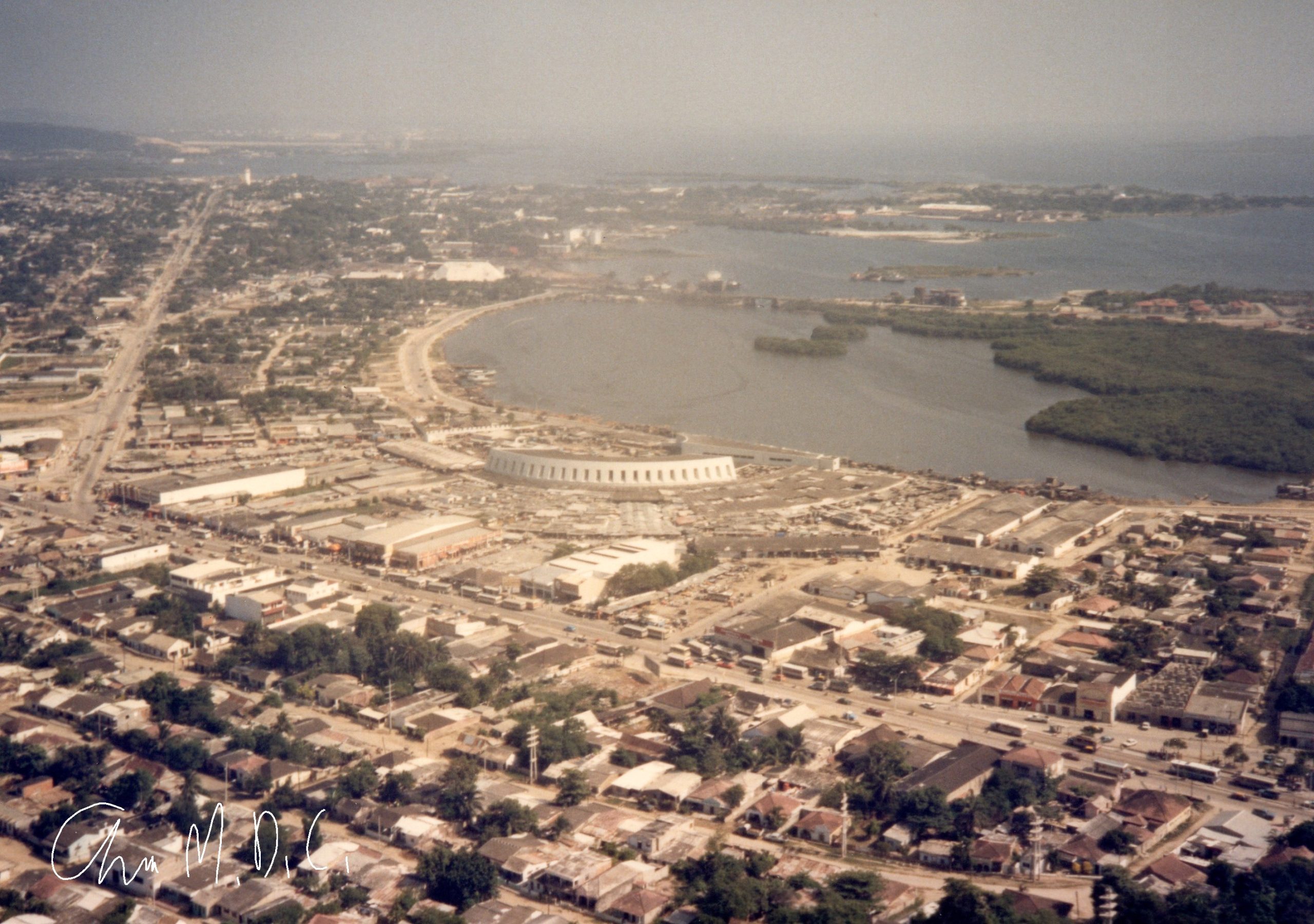
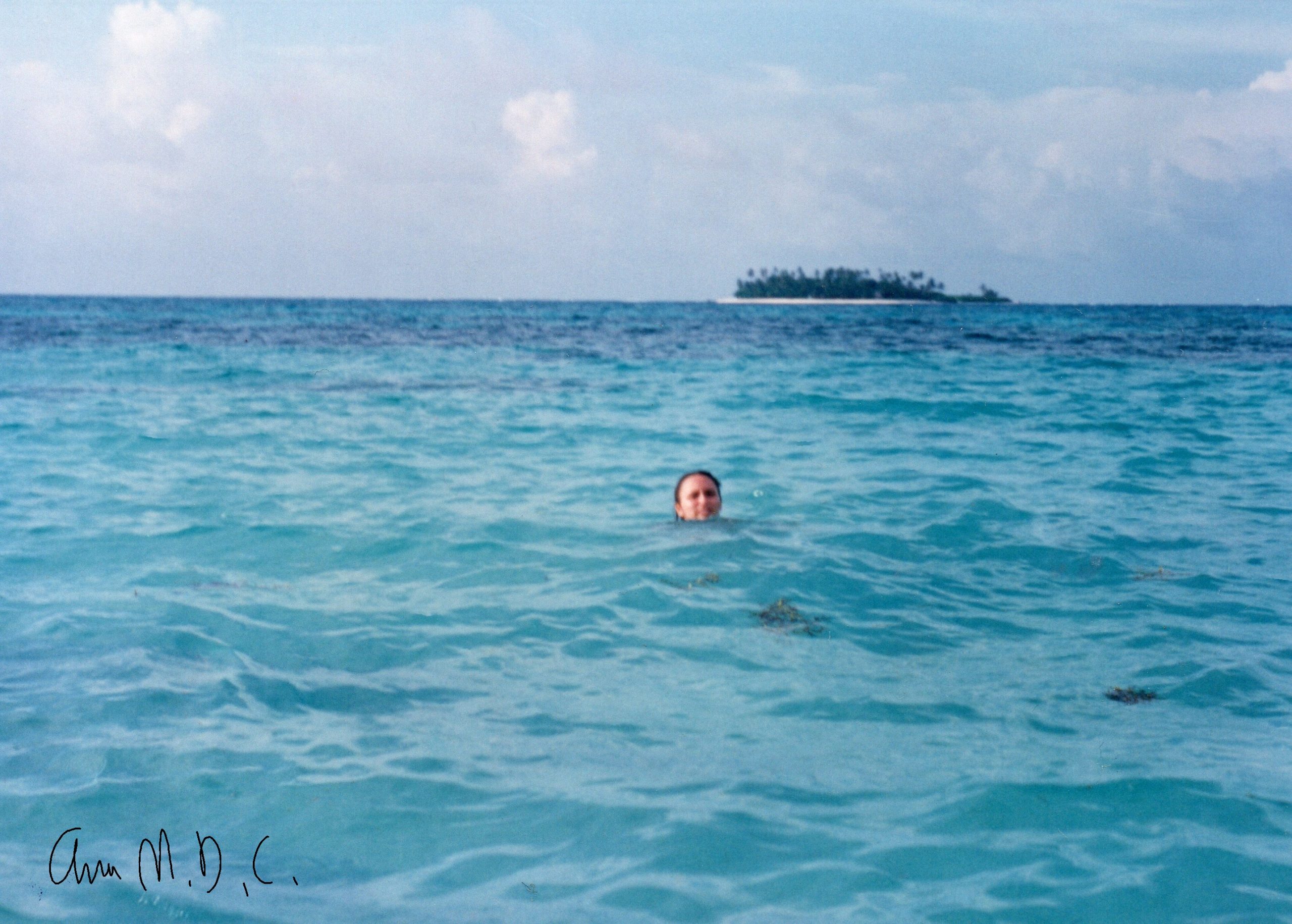
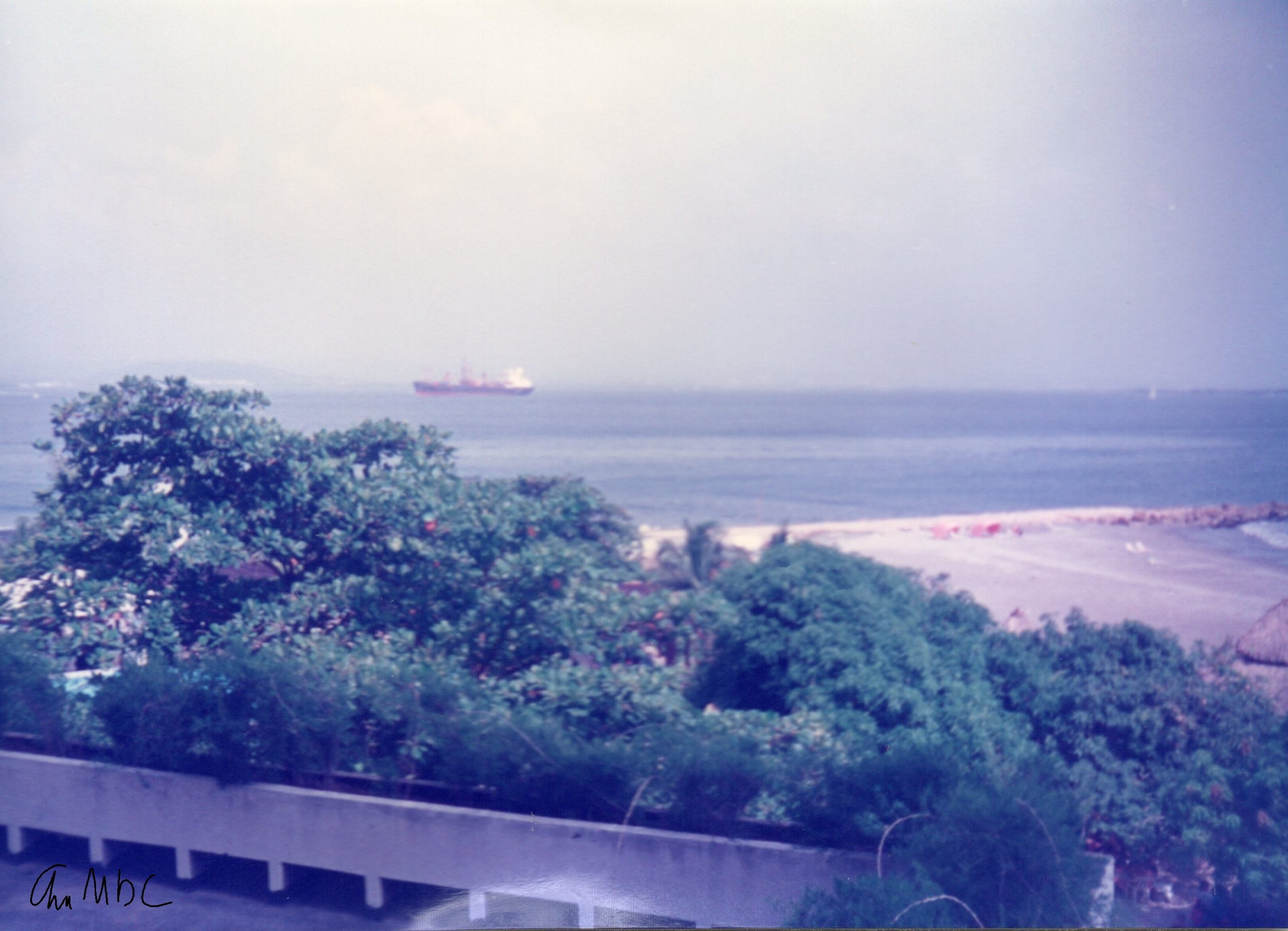
Mario Gareña, Jesus Arturo Garcia Peña, Leonor González Mina “La negra grande de Colombia”
Yo me llamo cumbia, yo soy la reina por donde voy
My name is cumbia, I am the queen where I go
No hay una cadera que se esté quieta donde yo estoy
There is not a hip that is (subjunctive form) still where I am (located)
Mi piel es morena como los cueros de mi tambor
My skin is brown like the skins of my drum
Y mis hombros son un par de maracas que besa el sol.
And my shoulders are a pair of maracas that the sun kisses.
Llevo en la garganta una fina flauta que Dios me dio
I carry in my throat a fine flute that God gave me
Canuto de millo, olor de tabaco, aguardiente y ron,
Canute/flute of millet, smell of tobacco, aniseed-brandy and rum,
Cojo mi mochila, enciendo la vela y repica el son,
I take my backpack, light the candle and the sound rings,
Y enredo en la luna con las estrellas toda mi voz.
And entangle in the moon with the stars all my voice.
Como soy la reina, me hace la corte un fino violín
As I am the queen, a fine violin makes me court
Me enamora un piano, me sigue un saxo, oigo un clarín
A piano enloves me, a sax follows me, I hear a clarion
Y toda la orquesta forma una fiesta en torno de mí
And the whole orchestra forms a party around me
Y yo soy la cumbia, la hembra coqueta, bailo feliz.
And I am the cumbia, the flirtatious female, I dance happily.
Yo nací en las bellas playas caribes de mi país
I was born in the beautiful Caribbean beaches of my country
Soy barranquillera, cartagenera, yo soy de ahí
I’m Barranquillera, Cartagenera, I’m from there
Soy de Santa Marta, soy monteriana, pero eso sí
I’m from Santa Marta, I’m Monteriana, but that is
Yo soy colombiana, ¡oh! tierra hermosa donde nací.
I am Colombian, oh! beautiful land where I was born.
Adapted from Musixmatch, powered Microsoft Bing. Songwriters: Jesus Arturo Garcia Pena. For non-commercial use only.
